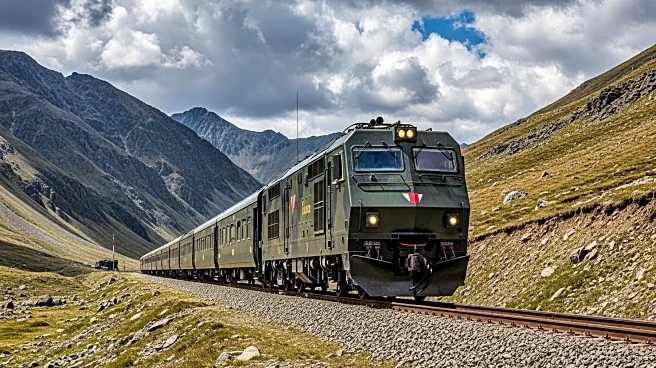What's Happening?
North Korean leader Kim Jong Un has traveled to Beijing in his signature armored green train to attend a massive military parade. The train, a symbol of the Kim dynasty, has been used by generations of North Korean leaders for both domestic and international trips. Kim's journey was confirmed by North Korean state media, which reported his arrival in Beijing accompanied by senior officials, including Foreign Minister Choe Son Hui. The delegation was welcomed by Chinese officials, including Foreign Minister Wang Yi and Beijing's mayor Yin Yong. The train, known for its slow speed and heavy armor, has been a subject of intrigue, featuring conference rooms, bedrooms, and advanced communication equipment.
Why It's Important?
Kim Jong Un's visit to Beijing underscores the ongoing diplomatic relations between North Korea and China, two countries with historically close ties. The use of the armored train highlights the security concerns and the symbolic continuity of the Kim dynasty's leadership style. This visit may influence regional politics, as North Korea continues to engage with major powers like China and Russia. The event also reflects North Korea's strategic approach to international diplomacy, balancing its isolation with selective engagement. The presence of senior officials suggests potential discussions on economic or security cooperation, impacting regional stability and international relations.
What's Next?
Following the military parade, further diplomatic engagements between North Korea and China may occur, potentially involving discussions on economic aid or security collaboration. The visit could lead to increased cooperation or agreements that might affect regional dynamics, especially concerning North Korea's nuclear program and economic sanctions. Observers will be watching for any statements or agreements that emerge from Kim's visit, which could signal shifts in North Korea's foreign policy or its approach to international sanctions.
Beyond the Headlines
The use of the armored train by Kim Jong Un not only serves as a practical mode of transportation but also as a powerful symbol of the regime's continuity and its approach to leadership. The train's luxurious features contrast sharply with the impoverished conditions reported within North Korea, highlighting the disparity between the ruling elite and the general population. This juxtaposition raises ethical questions about governance and resource allocation in the isolated nation.













